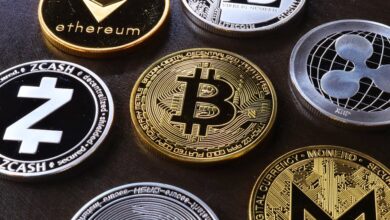Exploring Gold Mining: Techniques, Market Trends, and Sustainable Practices for a Thriving Industry

Gold mining has long been a cornerstone of economic growth and wealth generation, captivating investors and enthusiasts alike. As a safe haven asset, gold has maintained its allure throughout history, serving as a hedge against inflation and economic uncertainty. This article delves into the intricate world of gold mining, covering essential aspects of exploration, extraction, and production. We will explore the fundamentals of gold mining, highlighting various exploration and extraction techniques employed in the industry. Additionally, we will analyze current gold market trends, including price fluctuations, investment opportunities such as gold ETFs and bullion, and the economic impacts these changes have on global gold demand. Finally, we will address the importance of sustainable gold mining practices, striking a balance between production and environmental responsibility. With insights into gold reserves and the evolving technology in the sector, this comprehensive guide aims to provide a well-rounded understanding of the gold trade—from gold coins and jewelry to gold recycling and refining. Join us as we navigate the fascinating journey of gold from the ground to the marketplace, highlighting its pivotal role in investment portfolios and the broader economy.
- 1. The Fundamentals of Gold Mining: Exploration and Extraction Techniques
- 2. Understanding Gold Market Trends: Prices, Investment Opportunities, and Economic Impacts
- 3. Sustainable Gold Mining: Balancing Production with Environmental Responsibility
1. The Fundamentals of Gold Mining: Exploration and Extraction Techniques
Gold mining is a multifaceted process that begins with exploration and continues through extraction and production. Understanding these fundamentals is essential for anyone interested in the gold market, whether for investment or appreciation of this precious metal.
The exploration phase involves identifying and assessing potential gold deposits. Geologists utilize advanced techniques such as geological mapping, remote sensing, and geophysical surveys to locate areas rich in gold reserves. This phase is critical, as it determines the viability of a mining project. Successful exploration can significantly influence gold prices, as new discoveries may lead to shifts in global gold demand.
Once a prospective site is identified, extraction techniques come into play. There are two primary methods of gold extraction: placer mining and hard rock mining. Placer mining involves the extraction of gold from alluvial deposits, where gold has been naturally deposited by water movement. This method is often less invasive and can be more sustainable, aligning with the growing emphasis on sustainable gold mining practices.
On the other hand, hard rock mining involves extracting gold from solid rock, which often requires more extensive excavation and the use of explosives. This method typically yields higher quantities of gold but can have a greater environmental impact. Technological advancements in gold mining, such as improved drilling techniques and environmentally friendly processing methods, are helping to mitigate these impacts.
Gold extraction is further complemented by gold recycling, which plays a vital role in the gold supply chain. Recycled gold, derived from old jewelry, electronics, and other products, helps meet global gold demand without the need for new mining operations. This practice not only conserves resources but also aligns with the increasing consumer preference for sustainable and ethical gold sources.
As the gold market continues to evolve, understanding these exploration and extraction techniques becomes crucial for investors. Gold ETFs and gold futures are popular financial instruments that allow investors to gain exposure to gold without holding physical gold. Additionally, gold coins and bullion remain favored among collectors and those seeking a safe haven asset during economic uncertainty.
In summary, the fundamentals of gold mining encompass exploration and extraction techniques that are constantly adapting to meet the challenges of the modern gold market. The interplay of these methods with global economic factors, including inflation and the performance of cryptocurrencies, plays a significant role in shaping gold prices and investment trends. As the gold market analysis continues to unfold, staying informed about these fundamentals is key for both investors and enthusiasts alike.
2. Understanding Gold Market Trends: Prices, Investment Opportunities, and Economic Impacts
Understanding the dynamics of the gold market is essential for investors and stakeholders in the gold mining industry. Gold prices have historically demonstrated fluctuations influenced by various factors, including economic conditions, geopolitical events, and market sentiment. As a safe haven asset, gold tends to retain its value during times of economic uncertainty, making it a popular choice for hedging against inflation and currency fluctuations.
In recent years, gold investment has gained traction, especially with the rise of gold ETFs (exchange-traded funds) and gold futures, offering investors easier access to this precious metal without the need to physically store gold bullion or coins. The increasing interest in gold as a protective asset against inflation has led to a surge in global gold demand, prompting central banks to increase their gold reserves as part of their monetary policies.
Moreover, technological advances in gold mining and refining processes have made it possible to enhance gold production sustainably, addressing environmental concerns associated with traditional mining practices. Sustainable gold mining not only helps preserve ecosystems but also attracts socially conscious investors seeking ethical investment opportunities.
The gold trade is also affected by the trends in gold recycling, where old jewelry and scrap gold are processed to meet the growing demand. This practice not only supports the market by providing additional gold supplies but also reduces the reliance on new mining ventures, which can be environmentally taxing.
Furthermore, the relationship between gold and cryptocurrency has emerged as a noteworthy trend, with some investors viewing cryptocurrencies as an alternative to traditional gold investment. However, many still regard physical gold, such as gold bars and coins, as a more stable investment compared to the volatility of digital currencies.
As gold prices continue to fluctuate, market analysis remains crucial for understanding the implications of gold smuggling, luxury gold markets, and gold collectibles on overall gold investment strategies. Investors in gold jewelry and gold coins must stay informed about these market trends to make educated decisions that align with their financial goals.
In conclusion, navigating the gold market requires a comprehensive understanding of gold market trends, investment opportunities, and the broader economic impacts associated with gold mining and production. By staying updated on these factors, investors can effectively leverage gold's unique position in the financial landscape.
3. Sustainable Gold Mining: Balancing Production with Environmental Responsibility
The gold mining industry faces increasing pressure to adopt sustainable practices that balance production with environmental responsibility. As global gold demand continues to rise, driven by factors such as gold jewelry, gold investment, and the appeal of gold as a safe haven asset during economic uncertainty, the need for sustainable gold mining becomes more critical.
Sustainable gold mining entails methods that minimize environmental impacts while ensuring that gold production meets market needs. This includes the incorporation of advanced gold technology to enhance extraction processes and reduce waste. Companies are increasingly turning to sustainable practices, such as responsible sourcing, to address issues related to gold smuggling and unethical gold trade. By adhering to stringent environmental regulations and promoting transparency, the industry can foster trust among investors and consumers alike.
Gold recycling is also becoming an essential component of sustainable gold mining. By recovering gold from old electronics and jewelry, the industry can reduce the demand for newly mined gold, subsequently easing the strain on natural resources and minimizing environmental degradation. This practice is particularly relevant in today’s gold market trends, where the efficiency of gold refining processes can significantly impact gold prices and overall production costs.
Furthermore, as central banks accumulate gold reserves as a hedge against inflation, there is a growing demand for sustainable practices that align with the principles of the gold standard. By prioritizing sustainable gold mining, the industry can enhance its reputation and appeal to environmentally-conscious investors, particularly those interested in gold ETFs and gold futures that emphasize ethical sourcing.
Ultimately, achieving sustainability in gold mining not only contributes to environmental conservation but also supports the long-term viability of gold production. As global gold demand evolves, striking a balance between extracting gold and protecting our planet will be vital for both current and future generations of gold investors and enthusiasts. This commitment to sustainability can also bolster the appeal of gold coins, gold bullion, and luxury gold collectibles, ensuring that they remain attractive investments in an increasingly eco-aware market.
In conclusion, sustainable gold mining practices are essential for addressing the environmental challenges of the industry while meeting global gold demand. By adopting innovative technologies and prioritizing ethical sourcing, the gold mining sector can continue to thrive, even amidst the complexities of the gold market analysis and fluctuating gold prices.
In conclusion, the world of gold mining encompasses a complex interplay of exploration, extraction, and production techniques that are vital to understanding both the gold market and its broader economic implications. As we have explored, the fundamentals of gold mining lay the groundwork for navigating the fluctuating gold prices and recognizing gold investment opportunities, particularly in the context of current market trends.
The importance of sustainable gold mining cannot be overstated, as it advocates for a balance between production and environmental responsibility, ensuring that gold reserves are managed wisely for future generations. As global gold demand continues to rise, driven by factors such as inflation and the increasing interest in gold as a safe haven asset, the need for responsible practices in gold mining becomes ever more crucial.
Investors should remain informed about the dynamics of the gold market, including the roles of gold ETFs, gold futures, and the potential of physical gold, whether in the form of bullion or collectibles like gold coins and jewelry. Additionally, understanding the processes of gold refining and recycling will play a significant part in the future of sustainable gold production.
With the gold trade evolving, particularly in relation to emerging technologies and cryptocurrencies, keeping abreast of gold market analysis will be essential for anyone involved in gold investment. As central banks continue to hold gold as part of their reserves, the stability of this precious metal as a luxury commodity underscores its enduring value. As we move forward, the integration of sustainable practices in gold mining will not only enhance the industry's reputation but also contribute positively to the global economy.
Ultimately, the journey of gold from the depths of the earth to its status as a prized asset reflects its multifaceted role in our society, making it a compelling area of study for investors and environmentalists alike.





